
12 minute read
SIR SIDNEY NOLAN EXHIBITION
AROUND THE COMMUNITY
SYDNEY JEWISH MUSEUM
Sir Sidney Nolan’s Auschwitz
This month, the Sydney Jewish Museum will display a collection of 50 artworks by famous Australian artist, Sir Sidney Nolan, that have never been seen before in Australia.
The series was painted with great intensity in late 1961, during the trial of the infamous Nazi Adolf Eichmann, as Nolan prepared to visit Auschwitz on an art commission.
Until recently, these paintings remained mostly hidden away, their stories untold for over half a century. Yet, they reveal a darker side of the late artist, who was best known for his depictions of the mythology of bush life in Australia, including his paintings of bushranger Ned Kelly.
Nolan first painted images of concentration camps as early as 1939. Yet, his preoccupation with the camps was heightened in 1961. That is when he was invited to Poland to accompany a journalist from London’s Observer newspaper to illustrate an article about Auschwitz.
In the months leading up to the visit, Nolan grappled with how he might paint the camps, agonising over whether the incomprehensible horrors of the Holocaust could ever truly be the subject of art.
Then, in April 1961, the Adolf Eichmann trial began. Nolan, like the rest of the world, was captivated by the global televised coverage. Eichmann – who was responsible for the ruthlessly efficient railway system that used passenger trains and livestock carriages to transport Jews to the concentration and death camps – was being brought to justice. The trial reignited international awareness of Nazi atrocities and brought the voices of Holocaust survivors to the fore.
It also compelled Nolan to paint. In the final weeks of the trial, between November 27th and December 10th, Nolan created about a dozen portraits of the war criminal – each with subtle variations on the last – some in simple outline and others fully formed. The images depict Eichmann’s receding hair, thick rounded glasses, thin lips and buttoned shirt, mirroring the newspaper photographs of the Nazi behind bulletproof glass.
In late 1961, Eichmann was found guilty of crimes against the Jewish people, crimes against humanity and war crimes. He was sentenced to death.
The verdict seemed to give Nolan the release he needed to switch focus from Eichmann to the faces of victims of the Holocaust. He painted prisoners screaming and shrouded in smoke, and crucified on smoking crosses. He depicted some as skeletons on overfull wheelbarrows and others as bodies laid out in rows of death.
In January 1962, Nolan saw Auschwitz for himself. He arrived ready to paint, but what he witnessed changed him. He saw the crematoria, the mountains of shorn hair, discarded spectacles, suitcases and artificial limbs, and rows of bunks where prisoners slept. The experience shook him so completely that he decided never to paint Holocaust imagery again.
“Nolan grappled to find a language to convey the horror and inhumanity of the Holocaust and wrestled to find meaning amongst the pain,” the Sydney Jewish Museum’s Head Curator, Roslyn Sugarman, said.
She said it is a visceral and emotional exhibition, which puts an unparalleled lens on history, drawing us beyond facts … filling the gap where imagination can’t stretch. “The Museum’s expertise in giving history a voice provides the perfect backdrop to exhibit these artworks.
“Our 30 years of Holocaust storytelling is an ideal platform to take this art, contextualise it and engage audiences through powerful imagery.
“This is an exhibition that will change you,” Ms Sugarman said.
Shaken To His Core: The Untold Story Of Nolan’s Auschwitz will be on display at the Sydney Jewish Museum until 23rd October, 2022.
Sir Sidney Nolan’s Auschwitz
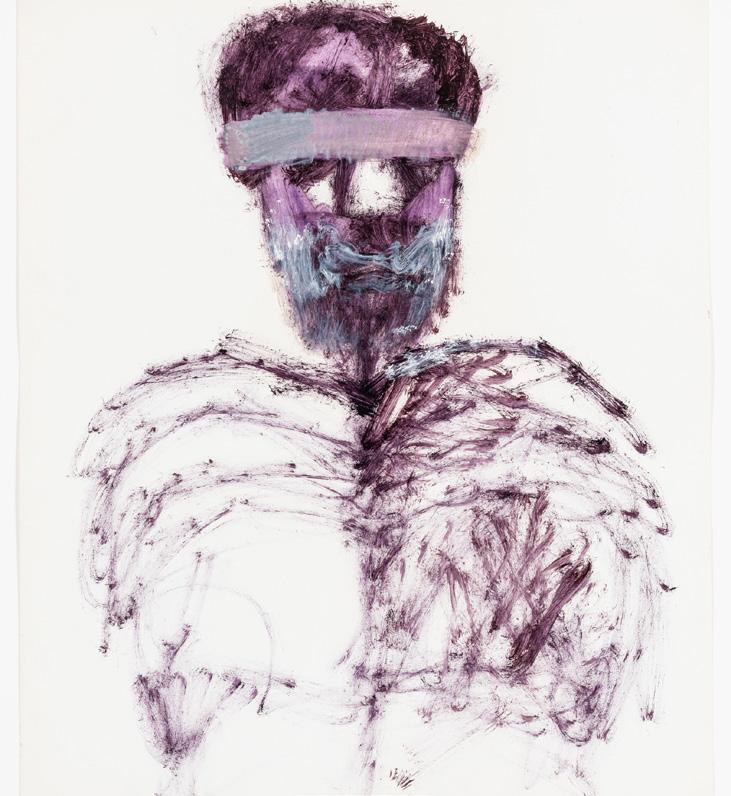
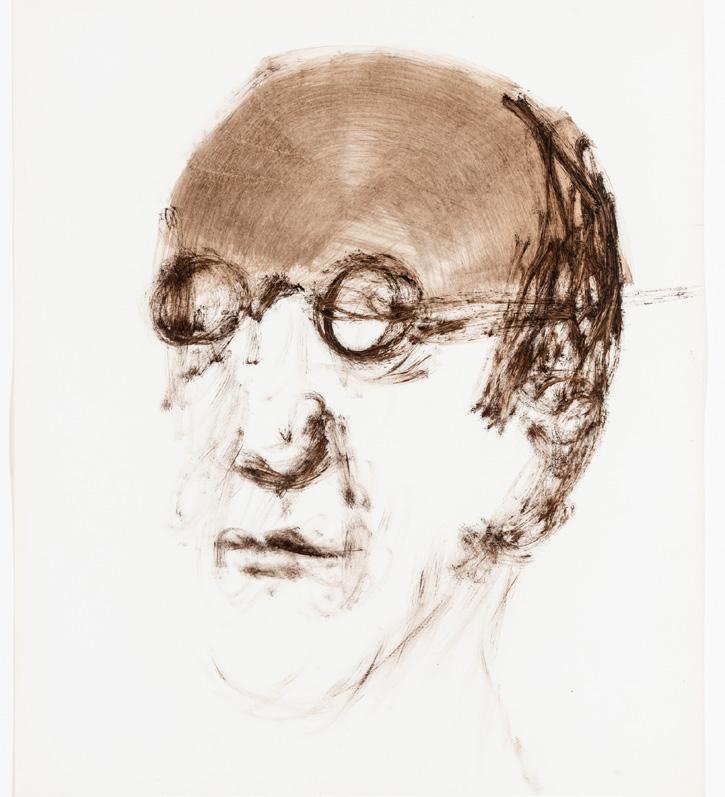
To book, go to: link.sjm.com.au/ nolantickets or scan the QR code.
Detail of NPGx88816 © National Portrait Gallery, London
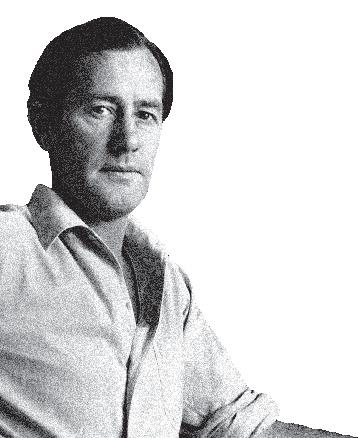
The Untold Story of Nolan’s Auschwitz On now until 23 Oct 2022
Sidney Nolan’s Auschwitz paintings have remained largely unseen; their stories untold for nearly 60 years. This exhibition showcases 50 works by the artist from a series that has never before been seen in Australia.
TICKETS ARE NOW ON SALE. Pre-purchase yours to guarantee admission.
sydneyjewishmuseum.com.au
JUDAICA QUIZ
RABBI DAVID FREEDMAN
With thousands of years of ‘material’ to draw from, it is no wonder The Central Synagogue’s Rabbi David Freedman has a plethora of options to choose from when it comes to selecting and crafting his well-known and much-loved monthly Judaica quiz!
He warmly invites readers to explore Jewish traditions along with customs, prayers, festivals, entertainment, Australian cultural history and of course, bible knowledge too. From ancient times to modern and everything in between here it is below, fashioned for you to enjoy once again with family and friends. 1. Who is the current Prime Minister of Israel (as of July 2, 2022)? 2. Which cousin of Moses and Aaron, according to the Book of Numbers, rebelled against his cousins? 3. England recently beat Israel 3:1 in which international soccer final? 4. Lord Beaconsfield was born Jewish and became Prime Minister of England in 1868 – what was his original name?
5. Hebrew prayers written in the form of an acrostic known as Tashrak have what special feature? 6. Rabbi Joel Sirkis, born in Lublin in 1561, wrote a major work on Jewish Law called Bayit Chadash – by what name, relating to his composition, is he more commonly known? 7. Which famous director, writer, actor,
comedian, producer and composer was born Melvin Kaminsky on June 28, 1926? 8. Which synagogue in Jerusalem, with a seating capacity of 10,000, is credited with being the largest synagogue in the world? 9. Who owns Manchester United? 10. Which city in Israel matches this description: Founded in 1882 by Jewish immigrants from the Russian Empire, it was the second Jewish farm settlement established in Ottoman Palestine in the 19th century, after Petah Tikva. As of 2017, it is the fourth largest city in Israel with a population of 254,384. 11. Which king of Israel succeeded King David? 12. Babi Yar is a ravine near which city? 13. In which year did the Palestine Post change its name to The Jerusalem Post?
14. Founded in 1923 by East Prussian chemist Abraham Goldstein as the first independent kosher certification agency – by which two letters is it known today worldwide? 15. Mizmor Letoda (Psalm 100) is generally said on weekdays, however, on the eve of which two festivals is it not said? 16. According to Melachim II (2 Kings 12), who assassinated King Joash (Yehoash): a) his servants b) his wives or c) his sons?
17. Which Israeli Prime Minister is mentioned in the lyrics of a Pink Floyd song? 18. Which Chief Rabbi of Britain studied at Balliol College, Oxford, served as a Rabbi of Melbourne Hebrew Congregation in Australia from 1923 to 1937, and was the last British Chief Rabbi to be born in the 19th century? 19. In which decade was Glick’s founded in Melbourne? 20. Born in Budapest to parents Rabbi Mayer Sámuel Weisz and Cecília Steiner, Erik Weisz (1874-1926) became one of the most famous performers of all time. By what name is he better known? 21. According to the Talmud in Berachot 4b, which psalm do we need to say three times every day to be sure of life in the world to come? 22. Which of the following composers was Jewish: a) Franz Schubert b) Gustav Mahler c) Joseph Haydn? 23. During the 1967 Six Day War, which post was held by Mordechai (Motti) Hod? 24. The custom of ritual swaying during Jewish prayer is known by what Yiddish word? 25. What is a kamaya?
Test your knowledge
Good luck. Enjoy. Hopefully, learn something new about your Jewish heritage and tradition.
ANSWERS PAGE 17
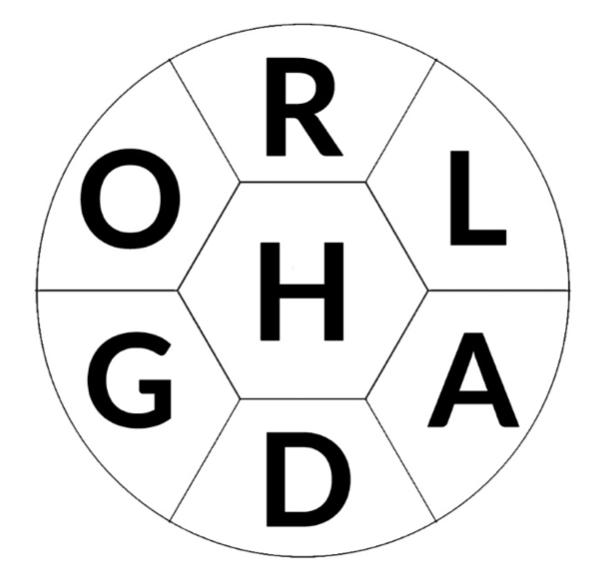
CANDLE LIGHTING TIMES
Friday, Jul 22, 2022 4:51 pm Shabbat ends, Jul 23, 2022 5:49 pm Friday, Jul 29, 2022 4:55 pm Shabbat ends, Jul 30, 2022 5:53 pm Friday, Aug 5, 2022 5:00 pm Shabbat ends, Aug 6, 2022 5:58 pm Friday, Aug 12, 2022 5:05 pm Shabbat ends, Aug 13, 2022 6:02 pm Friday, Aug 19, 2022 5:10 pm Shabbat ends, Aug 20, 2022 6:07 pm Friday, Aug 26, 2022 5:15 pm Shabbat ends, Aug 27, 2022 6:11 pm Friday, Sep 2, 2022 5:20 pm Shabbat ends, Sep 3, 2022 6:15 pm Friday, Sep 9, 2022 5:24 pm Shabbat ends, Sep 10, 2022 6:20 pm Friday, Sep 16, 2022 5:29 pm Shabbat ends, Sep 17, 2022 6:25 pm
Yoni Glatt’s JEWISH SPELLING BEE
How many common words of five or more letters can How many common words of 5 or more letters can you spell using the letters in the hive? Every answer you spell using the letters in the hive? Every answe must use the centre letter at least once. Letters may r must use the center letter at least once. Letters may be reused in a word. At least one Jewish word will use all seven letters. be reused in a word. At least one word will use all 7 letters and have a direct Jewish connection. Proper names and hyphenated words are not allowed. Score 1 point for each answer and 3 points for a Jewish term that uses all 7 letters. Proper names and hyphenated words are not allowed. Score 1 point for each answer, and 3 points for Rating: 6=Good; 9= Excellent; 12= Genius a Jewish related word that uses all 7 letters. Rating: 9=Good; 17= Excellent; 25= Genius Yoni Glatt has published more than 1,000 crossword puzzles worldwide, from the LA Times and Boston Globe to The Jerusalem Post. He has also published two Jewish puzzle books: "Kosher Crosswords" and the sequel "More Kosher Crosswords and Word Games". Here is a list of some common words (Yes, we know there are more words in the dictionary that can work, but these words are the most common):
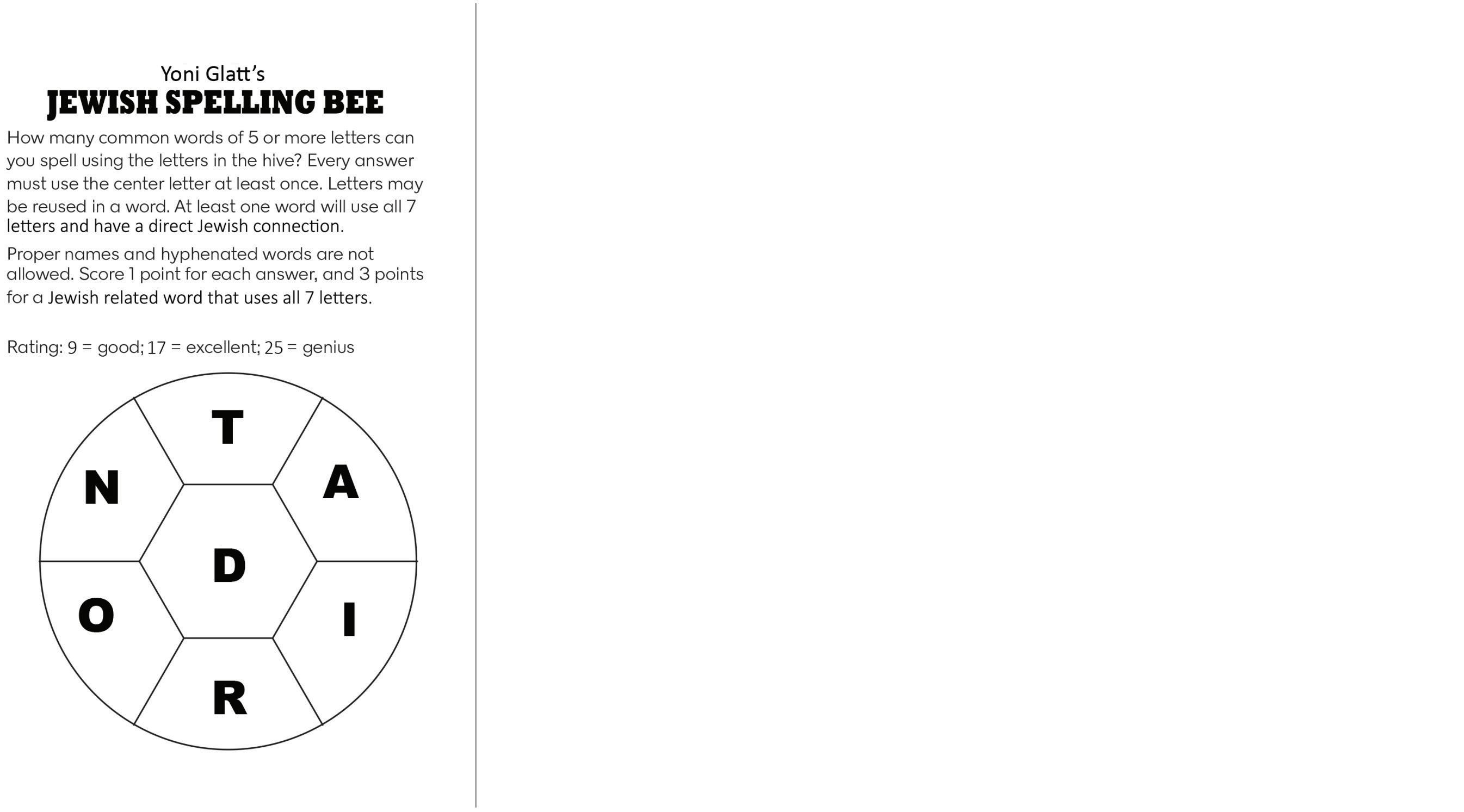
CONSIDERED OPINION
DANIELLA GUTERMAN COURTESY AISH.COM
It’s easy to judge other parents. Perched on the park bench, our minds race with disapproving thoughts as that mum “permits” her child to tantrum or that father “lets” his son block the slide. I would never allow my children to behave that way, we tell ourselves.
I caught myself doing this when I was out with my husband at an ice cream store, 11 pm, as a mother brought her toddler in to eat.
Once I realised what my mind was doing, I made an active effort to suppress it. Perhaps someone in the family was ill and after a long day the child was being comforted, before finally going home. Maybe they were headed to the nearby airport for a late flight and needed something to eat. The possibilities were endless and it only took minimal effort to favorably reframe the narrative.
Parenting is incredibly difficult. Why not try to build each other up, rather than tear each other down?
I think back to a time when I felt supported, without judgment, by a fellow parent. As I was carrying his younger sibling in a heavy car seat, our then pre-schooler decided it was prime time to throw himself on the parking lot floor. We were parked down the block and I was about to collapse under the weight of the car seat and the stress of my protesting child. A babysitter passed by with an eye roll, leaving me embarrassed.
Just then, a friend drove by and offered to take our little activist to our car so that I could use both hands to schlep the car seat. My friend did not mock me, nor did she indicate that I was inept for needing her help. She allowed me to hang onto the last vestiges of my dignity.
If supporting one another is such an incredible gift, why do parents judge one another instead?
Projecting incompetency
On a simple level, it’s hard to accept that people make alternative parenting choices.
But the answer may run a bit deeper, relating to the psychological phenomenon of displacement (introduced by Sigmund and Anna Freud).
To distract ourselves from our insecurities, we turn our attention to others. Misery likes company. If I can find fault in another’s parenting styles and choices, perhaps I don’t need to judge myself so harshly?
We tend to look at ourselves through a magnifying glass. Remember how embarrassed we were to leave the house when, as teenagers, we had a tiny pimple? We were convinced it’s all that anyone would look at. Look at that enormous zit engulfing your face. You poor thing.
In some ways, we aren’t so different from our teenage versions. We fear that everyone notices each of our parenting mistakes. Furthermore, we view our children as reflections of who we are, so when a child misbehaves, we feel like failures.
It’s a lot easier to project our sense of incompetency onto others.
How to decrease the need to judge
How can we foster an environment where we don’t feel the need to judge?
Firstly, let’s try to give other parents the benefit of the doubt, just as I readjusted my response to the woman feeding her daughter ice cream late at night.
Going further, let’s normalise parenting follies by allowing ourselves to be vulnerable and to vent our parenting frustrations. Rather than post pictureperfect experiences on social media, we can share our battles. Consider displaying an endearingly dysfunctional family picture rather than that glorious garden photo that required a lot of bribery to achieve that shot.
Let’s diffuse this need for parenting perfection and learn to laugh about our mistakes together. Rather than kicking ourselves for serving our children chicken nuggets for dinner again, we can joke with other parents about the nutritional merits of such food. When someone else’s child stands on a restaurant chair and gives an unwanted musical performance, we can replace that dirty look with a smile. We have the power to wordlessly tell the embarrassed parent, “I’ve been there. I get it.” With a sense of humour, we can show that we validate one another and break the cycle of judgment.
There’s no shame in making mistakes, nor in choosing an easier option. And when we see our children engaging in questionable behaviours, rather than viewing it as a poor reflection of ourselves, let’s openly discuss it with other parents.
Being more open and laughing about our mistakes will lighten the load. Our need to critique other parents to make ourselves feel better will shrink. And we’ll spend less time judging and more time offering our support to others.
Why parents enjoy mercilessly judging other parents



